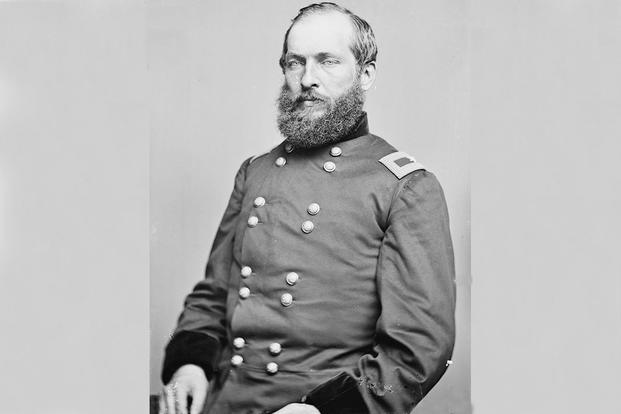The Civil War battle of Middle Creek, Kentucky, has been called "the battle that made a presidency" -- that of James A. Garfield, our nation's 20th chief executive officer. It was his leadership on the field during a period of low Union morale that launched Garfield's political career.
The 30-year-old Col. Garfield, then commander of the 42nd Ohio Regiment, arrived at the mouth of Abbott's Creek in Floyd County on Jan. 9, 1862. Fighting through thick mountain fog, Garfield's troops battled Confederate Brig. Gen. Humphrey Marshall's forces west and south of the creek, near its forks. The firing began at noon on Jan. 10 and continued until 5 p.m., when Garfield reported that the "rebels had been driven from the slopes at every point." At last, victory belonged to the Union.
Born Nov. 2, 1831, in Cuyahoga County, Ohio, James Abram Garfield was our last president born in a log cabin. His father died when he was 2, and Garfield earned money for his education by driving canal boat teams. The devout Disciple of Christ became a classics professor and later president of what is now Hiram College.
At the time of his military service, Garfield was still more than a quarter century away from his presidency. But the ideals that brought him into the war were the same ones that led him to seek his first political office in the middle of it. Having risen from lieutenant colonel to major general, participating in battles like Shiloh and Chickamauga, Garfield was nominated for and elected to Congress as a Republican. President Abraham Lincoln asked him to take the seat because he wanted men in Congress who knew the Army.
Garfield came into office convinced of the need for the Reconstruction platform advocated by his party, including the support of Black suffrage. After 18 years in the House, Garfield became the "dark-horse" nominee for president in 1880 -- and won.
As president, he was a strong Federalist and opponent of corruption at all levels. Sadly, his tenure in office was cut short by an assassin's bullet on July 2, 1881, as Garfield entered a Washington, D.C., railway station en route to his 25th reunion at Williams College. He died on Sept. 19 and is buried in Cleveland.
Want to Know More About the Military?
Be sure to get the latest news about the U.S. military, as well as critical info about how to join and all the benefits of service. Subscribe to Military.com and receive customized updates delivered straight to your inbox.















